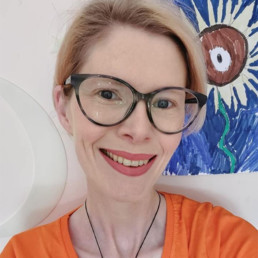
Written by Fliss Goldsmith
Fliss is an Emotional Wellbeing and Empowerment Coach and Inclusion and Belonging Consultant. Having worked for 2 decades across the Education sector as well as with individuals and corporates she has a breadth and depth of experience striving to create intentionally inclusive spaces for authentic belonging.
I was blessed to be part of DiverseEd’s July event at the Brownfield Institute in Wolverhampton. On arrival the empowering energy was palpable, and I knew immediately that everyone in attendance had a shared vision – for a kinder, safer, fairer future for education.
My part in the day was to deliver a session on Belonging and how that looks in education spaces. As an Asexual, disabled cis gender woman I have my own perspectives and wanted to share them as well as gain those of others. I remind myself often that intersectionality is at the heart of our learning.
We began with sharing our understanding of belonging – what does it mean, feel like and most importantly what is it not. The group was invested and together we found that belonging is about being able to be authentically yourself and still being seen, heard, respected and reflected in a space. The opposite, quite interestingly, of belonging is ‘fitting in’. Fitting in demands that we change who we are to match the space we are in, whereas belonging demands that we remain true to ourselves.
It sounds simple but it really isn’t. Belonging often stops before it gets going because places, people and situations are not inclusive. For too long we have lived in a white, heteronormative, cisgender, able bodied neurotypical, middle-class society with everything designed to support those characteristics. If you fall outside of these then you are faced with being ‘othered’ which immediately precludes you from belonging. As an Asexual I have not felt like I belonged since school, where it was a given that Allonormativity and Amatanormitivity were where we were all headed and if not, then there must be something fundamentally wrong with you. (spoiler alert there isn’t!)
The session held space for the experiences of those in attendance and I was humbled at the response. I heard from a non-binary attendee that they rarely felt like they belonged as they were misgendered and how language was paramount, every misuse of pronouns creating visceral pain. A black woman shared her experiences of racism and sexism within previous job roles and how that had moulded how she presented, shrank herself to not stand out. Ultimately these practices of fitting in create nothing but damage to the physical, mental and emotional wellbeing of the victim.
So how do we do it better in our educational spaces? There is hope and there are so many great Educators out there already trying to create inclusive spaces where everyone is supported in being their authentic selves.
Here are my top 10 ideas for making sure that the spaces you have control over cultivate a sense of belonging for anyone who enters them.
- Prioritize Connection – Create spaces where meaningful conversations can take place.
- Create interest groups – Ensure an accessible way for staff/students to put forward their ideas (anonymous point of entry essential.) Remember the mantra ‘nothing about us without us’ always consult someone who represents the group if they are comfortable being involved.
- Have courageous conversations – you are a role model and if you can share your struggles and challenges this immediately gives others permission to do the same.
- Be Accountable – a clear, kind apology is essential – but it means nothing without a change of actions going forwards.
- Call it in before you call it out. If someone is behaving in a way that contravenes the rules of your spaces, then call them in to see what is at the root of their poor behaviour.
- Celebrate as many ‘days’ as you can – but don’t let it stop there, yes LGBT+ History Month is February but make sure the flags are there all year long.
- Cross curricular representation – Make sure that every subject has resources that reflect different cultures, genders, sexualities, abilities etc.
- Spread the Art of Appreciation – share what you appreciate and get others to share theirs, this harnesses the brains neuroplasticity and creates positive neural pathways making people feel more connected.
- Teamwork is essential but don’t let it isolate people – use numbers not genders for teams and ensure teams are celebrated in a way they are comfortable with (does your Autistic student want to go on stage to get their prize? Maybe, you’d have to ask them- don’t assume)
- Ensure inclusive practices – visual descriptors, announcing your pronouns, inclusive language, accessibility, not making assumptions etc.
Inevitably there will be mistakes, steps sideways and ‘oh no’ moments when trying to build an inclusive space. When we know better, we must do better – so apologise and rectify and model that behaviour as a growth step.
The future needs incredible leaders to ensure we can all authentically belong. You’ve got this!

